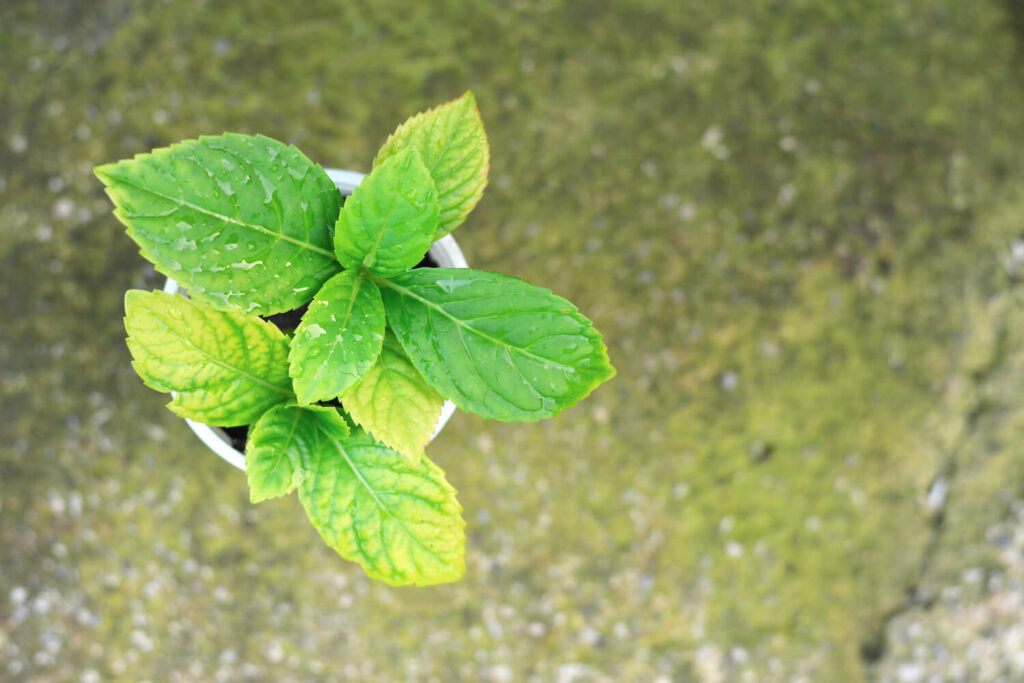An Unbiased View of Hydrangea Leaves Turning Yellow
Table of ContentsHydrangea Leaves Turning Yellow Things To Know Before You BuySome Known Details About Hydrangea Leaves Turning Yellow Examine This Report about Hydrangea Leaves Turning YellowRumored Buzz on Hydrangea Leaves Turning YellowThe Hydrangea Leaves Turning Yellow IdeasGetting My Hydrangea Leaves Turning Yellow To Work
One opportunity is that the plant is not getting sufficient sunlight. Throughout the winter season, the days are much shorter, and the sun is not as extreme, so make certain to put your Hydrangea in an area where it will obtain at the very least six hours of sunlight daily. One more reason for Hydrangea yellow leaves in winter can be also much water.The fallen leaves may be turning yellow due to temperature level anxiety. Hydrangeas like cooler temperatures, so if the plant remains in an area that gets also hot or also chilly, the fallen leaves will certainly transform yellow. If you assume temperature tension may be the concern, attempt relocating your Hydrangea to a different area or securing it from the elements with a cloth wrap.
New development will be observed in very early spring, when you'll see eco-friendly vegetation sprouting from stems that could have appeared dead. If your fallen leaves are turning brown in springtime or summer, there are most likely various other elements at play (Hydrangea Leaves Turning Yellow). The specific reasons depend upon the variety and their growing problems, but generally, brownish hydrangea leaves are an indication of dehydration and wilting in the warmth
The Best Strategy To Use For Hydrangea Leaves Turning Yellow

Wilting is triggered by absence of dampness, meaning there are a few great methods to make use of to prevent this from occurring. Provide your hydrangeas a healthy and balanced glug of water every couple of days when the temperatures are climbing up high, and deal with the soil to far better preserve wetness. After watering, a dab of mulch around the base of each plant ought to assist with this by maintaining dampness in the dirt.
This disrupts fungi spores from resolving. "The Botrytis fungi thrives in amazing and damp problems, so stay clear of bathing the entire plant when sprinkling and simply water at the origins," shares Roy Nicol, a Master Green thumb. If you have actually missed out on the possibility for avoidance and are managing an infection you need to get rid of all dead or severely infected fallen leaves from the plant and damage them to avoid more spread.
Some Known Facts About Hydrangea Leaves Turning Yellow.
As a general guideline, we recommend getting rid of fallen leaves when they are 50% brown or greater. While browning caused by any kind of reason can't be turned around, taking the corrective activity explained above will certainly motivate the plant to grow brand-new leaves so the harmed leaves either diminish my website naturally or can be gotten rid of by the gardener.
Hydrangeas need to be sprinkled only when the leading few inches of soil are dry, and need to be given a comprehensive soaking each time. Underwatered hydrangeas are most likely to have yellow, wilting, and drooping fallen leaves.
The method you repair hydrangea leaves transforming yellow depends on the vital problem triggering the yellow fallen leaves. This can be hard to figure out, once you do you will have the ability to readjust your plant care accordingly to care for the trouble. As mentioned before, a typical issue with hydrangeas is vitamins and mineral shortages.
More About Hydrangea Leaves Turning Yellow
During the top growing period, you ought to sprinkle at a rate of concerning 1 inch per Check This Out week. If you are stressed regarding not properly sprinkling your hydrangeas, there are a pair of points you can do. Adding mulch to the base of the plants over the root zone assistance to manage the temperature around the shrub and retain water in the dirt.
You can buy and install basic watering worlds. Sprinkling globes hold water in them and gradually release this water right into the dirt as the ground comes to be completely dry. Just fill the world with water, stick the spout into the soil within the root zone near the base of the plant, and leave it in position until all the water is gone.
If it is too serious, some plants will never ever recover from transplant shock and will remain to decrease until they die. Minimize transplant shock by including as several roots as possible when digging up your plant to move it. Make certain to give even more water than normal in the weeks adhering to planting to help your plant recuperate and expand brand-new roots.
How Hydrangea Leaves Turning Yellow can Save You Time, Stress, and Money.
To avoid spreading fungal illness, make sure to thouroughly clean and disinfect any type of trimming tools prior to and after usage. Lastly, you can try to flush the origins with water to remove excess fertlizer.
Your hydrangea plant likes well-drained, moist dirt. If the pot has inadequate water drainage, or your soil is flooded, the leaves will certainly begin to turn yellow.
If you don't water your hydrangea plant for even more than a week, the leaves will begin turning yellow. Fungal illness that strike the plants have a tendency to reveal indicators on the origins and the leaves of the plant. Among these diseases is root rot, that makes it tough for the plant to feed correctly.
The 2-Minute Rule for Hydrangea Leaves Turning Yellow
